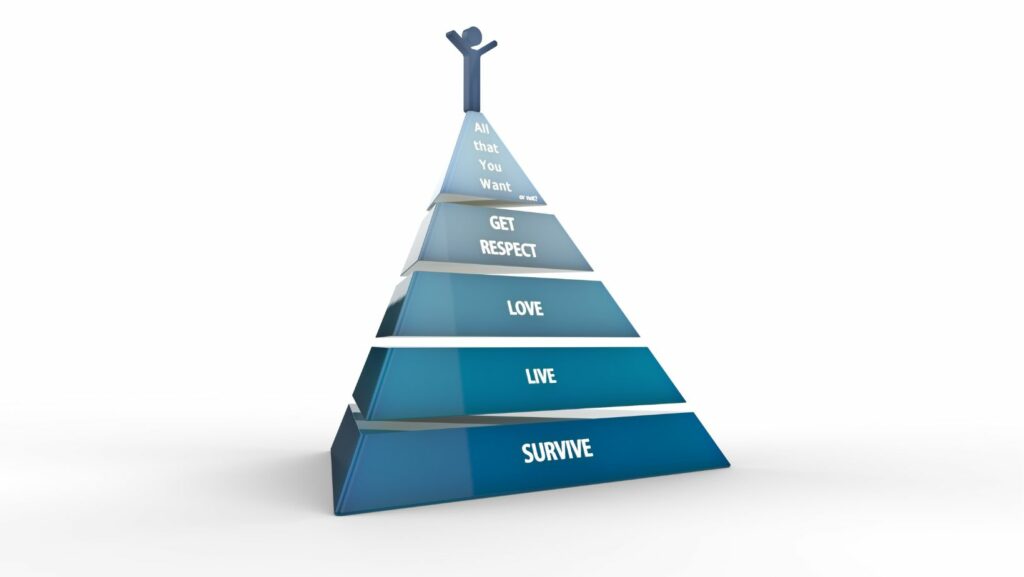
Maslow’s Theory Maintains That a Person Does Not Feel a Higher Need
Maslow’s Theory Maintains That
Maslow’s theory maintains that a person does not function solely based on their physical needs, but rather, there is a hierarchy of needs that must be fulfilled in order to achieve self-actualization. As an expert in psychology, I have delved into Maslow’s theory extensively and have witnessed its profound impact on understanding human behavior. In this article, I will explore the different levels of Maslow’s hierarchy of needs and how they shape an individual’s motivation and behavior.
Understanding Maslow’s hierarchy of needs is crucial for anyone seeking to comprehend human motivation and behavior. As I delve into each level of the hierarchy, I will provide clear examples and practical insights to help you grasp the significance of this theory. With my expertise in psychology, I will break down the complexities of Maslow’s theory into easily digestible information that you can apply to your own life or professional practice.
Maslow’s theory has become a cornerstone in the field of psychology, revolutionizing the way we understand human needs and motivations. Through my years of experience as a psychologist, I have witnessed the profound impact of this theory on individuals’ lives. Join me as I delve into the depths of Maslow’s hierarchy of needs, unveiling the intricate web of human desires and aspirations that drive our actions and shape our self-actualization.
Understanding Maslow’s Hierarchy of Needs
Maslow’s theory is a fundamental concept in psychology that provides valuable insights into human behavior. It is based on the idea that individuals have certain needs that must be met in order to reach their full potential and achieve self-actualization.
The Hierarchy of Needs
According to Maslow’s hierarchy, our needs can be classified into five distinct levels, with each level building upon the previous one:
- Physiological Needs: This is the most basic level of needs, including necessities such as food, water, shelter, and sleep. Meeting these needs is crucial for our survival and well-being.
- Safety Needs: Once our physiological needs are satisfied, we seek a sense of safety and security. This includes protection from harm, stability, and a predictable environment.
- Belongingness and Love Needs: As social beings, we have a fundamental need for love, affection, and a sense of belonging. We seek meaningful relationships, friendship, and acceptance from others.
- Esteem Needs: Once our social needs are fulfilled, we strive for self-esteem and recognition. This involves gaining respect from others, achieving success, and feeling confident in our abilities.
- Self-Actualization: At the pinnacle of the hierarchy lies self-actualization, which involves realizing our full potential and becoming the best version of ourselves. This includes personal growth, creativity, and pursuing our passions.
The Impact on Behavior
Understanding Maslow’s hierarchy of needs helps us comprehend why people behave the way they do. As individuals progress through the levels, their motivations and priorities shift accordingly. For instance:
- A person who is struggling to meet their physiological needs may focus primarily on finding food and shelter. This intense drive to satisfy basic needs can overshadow other concerns.
- Someone who has satisfied their physiological and safety needs may seek validation and connection. They may actively seek out friendships and relationships to fulfill their belongingness and love needs.
- Once a person has gained a sense of belonging and love, they may then strive for recognition and achievement. They may engage in activities that contribute to their self-esteem and pursue goals that align with their values.
- Finally, individuals who have reached self-actualization are driven by personal growth, self-improvement, and the desire to make a meaningful impact on the world.

The Five Levels of Maslow’s Hierarchy of Needs
Maslow’s theory of human motivation, which maintains that a person does not feel a higher need until the lower needs are met, is an essential concept in understanding human behavior. This theory is often represented as a pyramid, with each level building upon the previous one. Let’s explore the five levels of Maslow’s Hierarchy of Needs:
- Physiological Needs: At the base of the pyramid are the most fundamental needs that every individual must fulfill for survival. These include the need for food, water, shelter, and clothing. Without these basic requirements, it is challenging to focus on anything else.
- Safety Needs: Once physiological needs are satisfied, individuals seek security and stability. This level encompasses the need for personal safety, financial security, a stable environment, and protection from harm. It is crucial to feel safe and secure in order to pursue higher aspirations.
- Love and Belongingness Needs: Once safety needs are met, individuals desire social connections and a sense of belonging. This level includes the need for intimate relationships, friendships, and a supportive social network. The need for love and companionship plays a significant role in our overall well-being.
- Esteem Needs: Having fulfilled the previous three levels, individuals strive for recognition and a positive sense of self. Esteem needs encompass both internal and external factors, such as self-esteem, confidence, and the desire for respect and admiration from others. Meeting these needs helps shape our self-image and fuels our self-confidence.
- Self-Actualization Needs: At the pinnacle of the pyramid is self-actualization, the realization of one’s full potential and the pursuit of personal growth and fulfillment. This level involves reaching one’s goals, pursuing meaningful activities, and self-fulfillment. Self-actualized individuals are driven by a strong sense of purpose and are constantly striving for personal growth.





